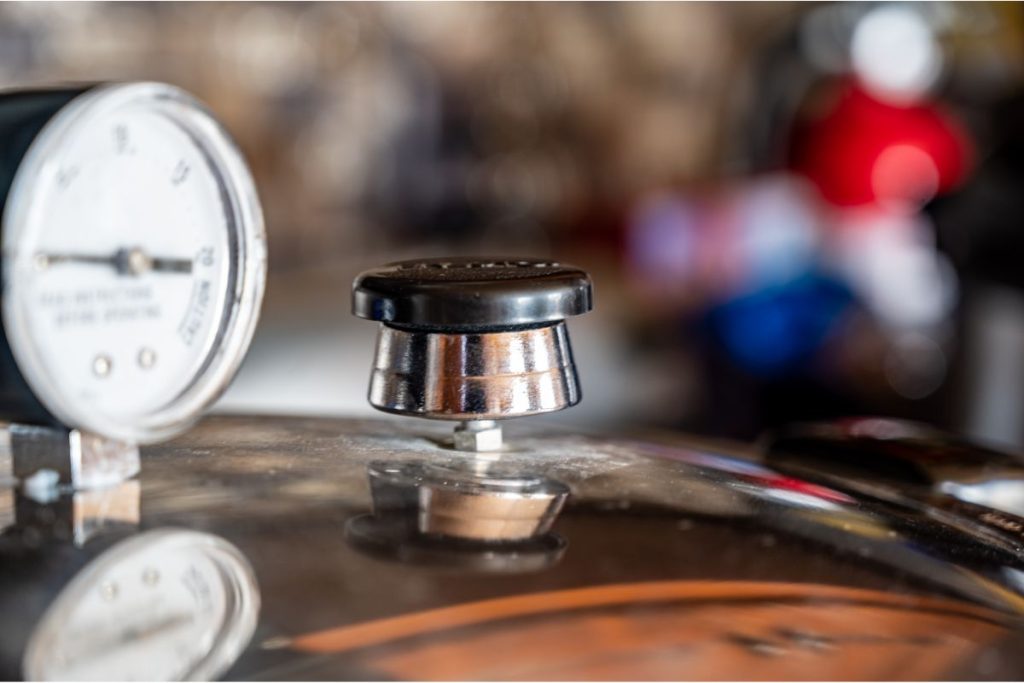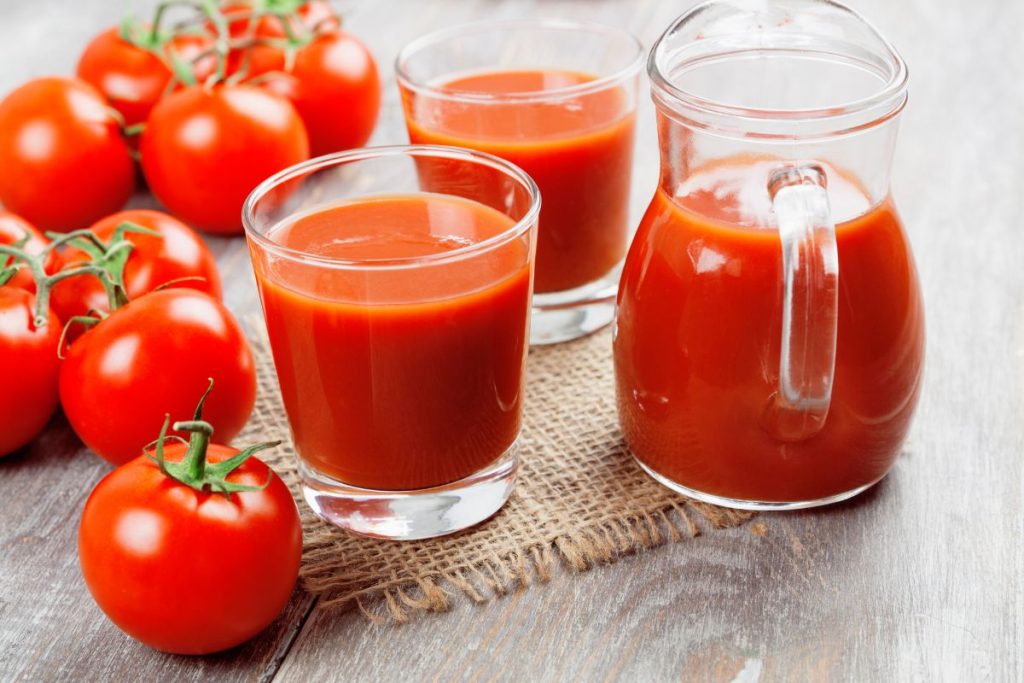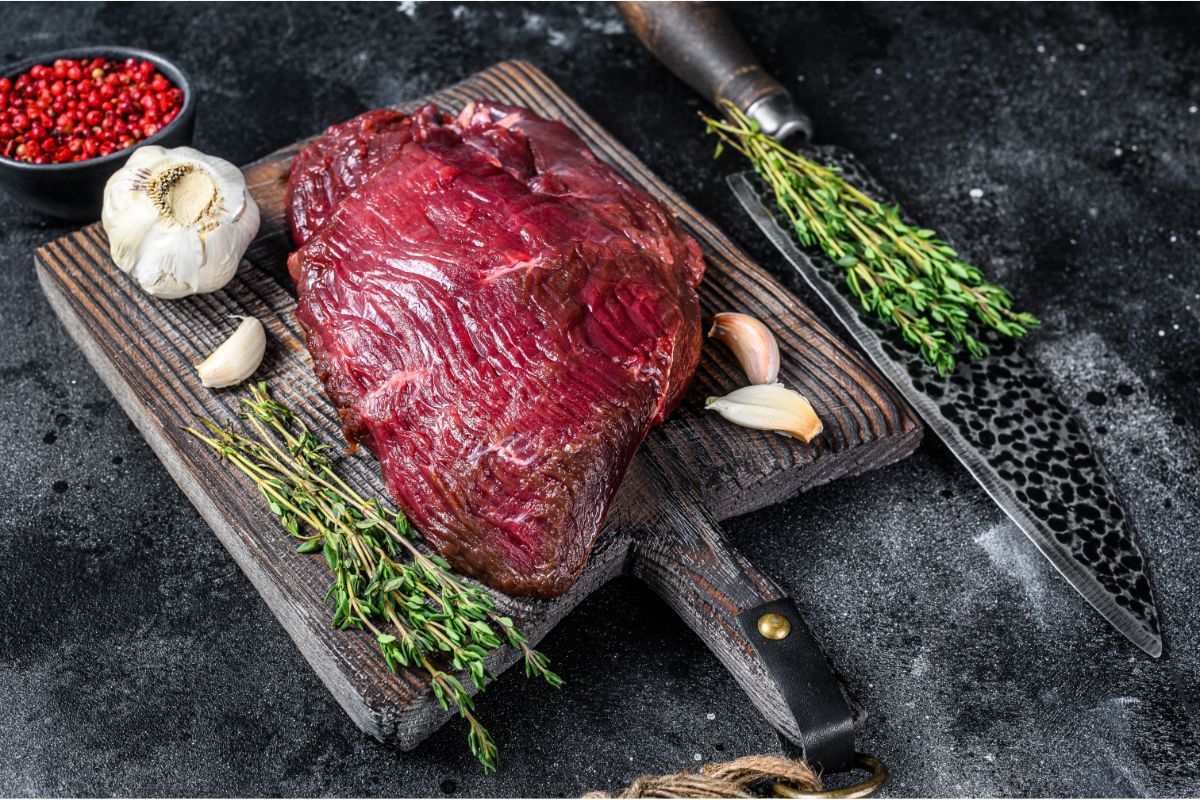When canning venison, trim and discard any excess fat, and cut the meat into small pieces. Cold pack the meat in sterilized canning jars with 1 teaspoon of salt per quart jar. Fill the jars with boiling water or tomato juice, leaving 1/2-inch of headspace, and process quarts at 15 pounds of pressure for 120 minutes.
Step-by-Step Guide for Pressure Canning Venison
- Start by washing canning jars, lids, and bands in hot, soapy water. Rinse well, and set aside.
- De-bone and cut the game meat into small strips, discarding fat and connective tissue.
- Boil the raw meat for 3 minutes to help remove impurities, then rinse the meat in cold water.
- Fill a large bowl with water and add one tablespoon of salt per quart of liquid.
- Add the meat to the salt water and let it soak for one hour, then use cold water to rinse the brine off of the meat.
- Place the canning jars in the pressure canner and add enough water to cover them by 2 inches.
- Bring the water to a boil and let the jars sterilize for 10 minutes.
- Using a jar lifter, remove the sterilized jars from the pressure canner and place them on a clean towel.
- Fill the jars with the meat using a canning funnel, leaving 1 inch of headspace.
- Pour hot water or tomato juice into the jars using a ladle, maintaining 1-inch headspace.
- Remove air bubbles from the jars by inserting a clean spatula and gently pressing on the venison meat.
- Clean the jar rims with a paper towel, and place the lids on top. Screw on the seal bands until they are fingertip tight.
- Using the jar lifter, place the jars into the pressure canner. Add enough water to cover the jars by 2 inches.
- Close the lid on the pressure canner and bring it up to pressure according to the manufacturer’s instructions.
- Process pint jars for 90 minutes and quart jars for 120 minutes per the tables below:
Processing pressure for venison in a dial gauge canner.
| Altitude (ft) | 0-2,000 | 2,001-4,000 | 4,001-6,000 | 6,001-8,000 |
| Pints (90 mins) | 11lbs | 12lbs | 13lbs | 14lbs |
| Quarts (120 mins) | 11lbs | 12lbs | 13lbs | 14lbs |
Processing pressure for venison in a weighted gauge canner.
| Altitude (ft) | 0 – 1,000 | 1,001 + |
| Pints (90 mins) | 10lbs | 15lbs |
| Quarts (120 mins) | 10lbs | 15lbs |
- After processing, turn off the heat and let the pressure canner cool naturally.
- Remove the jars using the jar lifter and place them on a clean towel to cool.
- Check the jars for proper sealing. The lids should be concave and not pop back when pressed.
- Label the jars, and store them in a cool, dry place.
What Kind of Pressure Canner Do You Need to Can Venison?
You can use either a dial gauge or weighted gauge pressure canner for canning venison. It is important to note that pressure cookers are not meant to be used for canning.
Two of the most popular high-quality pressure canners are the All-American (weighted gauge) and Presto (dial gauge). It is important to note that some dial gauge pressure canners come with a weight that will rock if the pressure exceeds 15lbs.

Can Venison Be Canned in a Water Bath?
No. It is not recommended to can venison in a boiling water bath canner. Use a pressure canner when canning deer meat.
Should You Raw Pack or Hot Pack Venison for Canning?
Both raw and hot packing methods can be used for canning wild game meat.
Raw packing is quicker and easier because you don’t need to pre-cook the meat. However, raw packing results in more shrinkage.
Hot packing requires more effort because you have to pre-cook the meat. This method produces a higher-quality product with a tender texture and results in less shrinkage during processing.
What Liquids Can You Use When Canning Venison?
Common liquids used for canning venison include water, broth, and tomato juice.
Many people prefer to use tomato juice when canning game meat because the acidity of tomato juice will tenderize the meat and remove some of the gamey flavors.

What Can You Do With Canned Venison?
These canned venison recipes are crowd-pleasers and easy to make:
1. Venison Vegetable Soup
Use fresh veggies with canned venison to make this delicious soup!
2. Venison, Sausage, and Black Bean Chili
This rich dish uses venison, chicken sausage, and hearty black beans for a robust, filling chili.
3. Venison Sandwich
This sandwich is made on rye bread, with pickled onions and mustard. Simply substitute canned venison for fresh!
4. Venison Pasta Bake
This protein-packed pasta bake is a great way to use canned venison.
5. Venison Pot Pie
This versatile pot pie is made using venison, veggies, and rich gravy.
What are the Benefits of Canning Venison?
- Convenience. Having canned venison saves you time and lets you prepare quick meals!
- Cost-effective. If you have access to wild game, canning can be a way to stretch your food budget and provide a supply of protein throughout the year.
- Flavor. Canning venison enhances the flavor and texture of game meat.
- Longer shelf life. Canned venison lasts longer than fresh or frozen venison.
- Nutritional value. Canned venison, like beef and pork, retains most of the nutrients present in the meat, including essential amino acids, minerals, and protein.
- Saves freezer space. Canning venison saves valuable freezer space and lowers energy costs.
- Versatility. Canned venison is a versatile ingredient and can be added to stews, soups, and casseroles.
How Long Will Canned Venison Last?
According to the USDA, canned meat remains shelf stable for 2-5 years. For the best flavor, it is advised to consume canned venison within one year.
For the longest shelf life, store canned venison in a cool, dry place away from direct sunlight, heat, and moisture.

